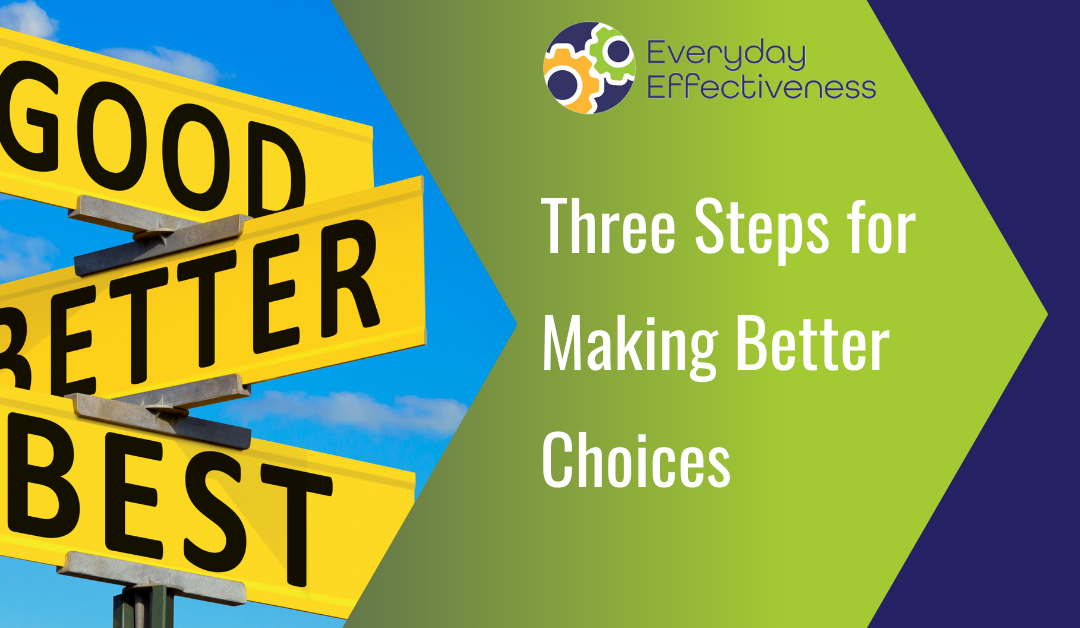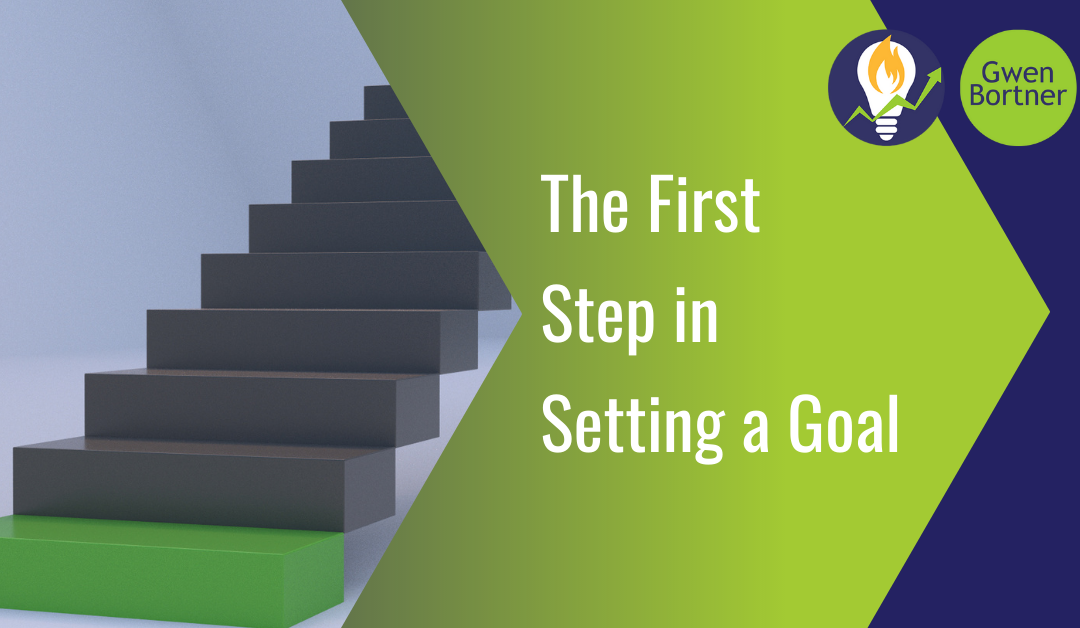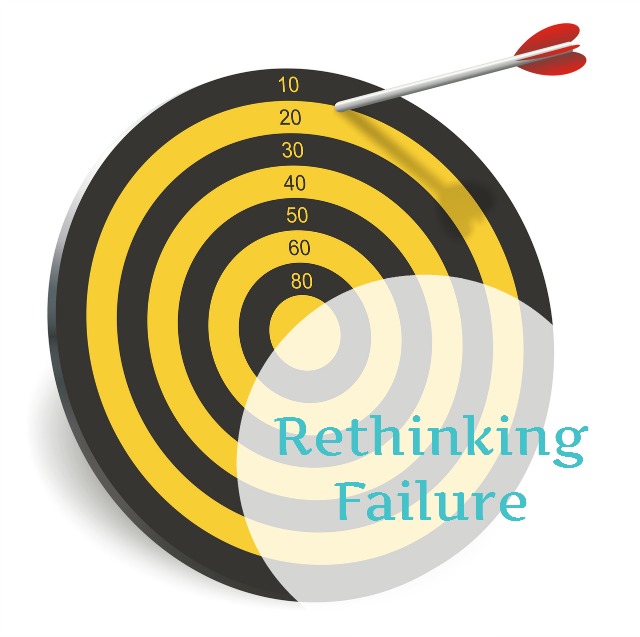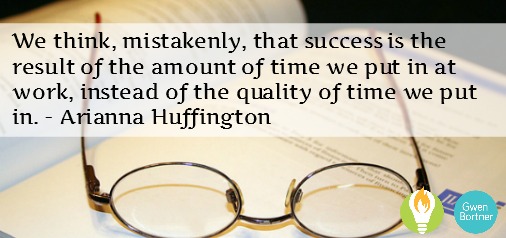
by Gwen Bortner | Leadership, Tips & Tricks
Do you struggle to make decisions for your life or business, because you never know if you’re making the “right” choice? The truth is, you may never know if you made THE “right choice” at the moment, and chances are there’s more than one option that could be right for you, depending on the circumstances. You don’t get to make two choices at once and test them against one another like a science experiment, so you have to just take a deep breath and choose the option that feels the most right and go forward from there.
Previously, I’ve talked about the biggest obstacles that hold you back from making a decision. Now, I want to give you some tips for narrowing down your choices and getting clear on the most right decision for you and your business, no matter what your options are.
How to Make Better Choices
Take Your Time
Things tend to feel very urgent in the moment. There’s a deadline looming, or you’re caught up in the idea that you’re going to miss some significant opportunity if you don’t figure out all the choices right now. In reality, we often create a false sense of urgency when we’re struggling with a decision, and it’s usually not even necessary. Opportunity does knock twice, no matter what people might tell you, and there is always another train to catch. Give yourself the time and mental space you need to make a decision because rushing through the process usually results in negative outcomes.
Eliminate Emotions
Whether you’re a “Star Trek” fan or not, chances are you’re at least a little familiar with the character Spock, who is from the planet Vulcan. The Vulcans are known for having eliminated their emotional responses to every situation through a rigorous system of meditation and a focus on logic. You may not be able to channel your inner Vulcan, but in many cases, an emotional response may be clouding your vision when making a decision. Take a few minutes to journal about the feelings associated with a decision, and it may bring a lot of clarity on why you’re feeling stuck. You shouldn’t discount your emotions entirely – after all, your “gut feeling” may be leading you in the right direction. However, you also don’t want to make decisions based solely on emotions, because they have the power to affect your judgment. Once you can identify what you’re feeling, it gets easier to separate yourself from that emotion and move forward with a decision that is rooted in logic.
Narrow Your Options
In your school days, if you had to take a multiple-choice test, the best strategy was to start by eliminating some of your options. Usually, those types of tests had at least one answer choice that was obviously wrong, if you just took the time to evaluate it. The same strategy can be applied to your decision-making; if you narrow down your options, you can make an easier decision based on what’s left over after you’ve eliminated the choices that are obviously wrong for you and your business.
If you’ve given yourself time and space, you’ve identified your feelings and balanced them with logic, and you’ve narrowed down your options, you can then make a decision knowing that you have thought through your options completely.
As an entrepreneur, you face many choices in all areas of your business every day. Sometimes it’s not clear which part of your business you should start with. Take the GEARS Assessment today to help you identify which area needs your attention before the others.

by Gwen Bortner | Marketing, Training & Instruction
Have you reached the upper limit of your productivity in your business? Are you doing all you can, but it still just doesn’t feel like you’ve grown your business to where you want it to be? If you’ve been running things as a CEO who is also the face of your business, there’s only so much growth you can handle on your own. If you’re ready to scale your business, it’s time to make some changes.
What’s Your Level-Up Goal?
The first step in scaling your business is to determine how far you want to take it. You don’t have to scale from where you are today to Amazon-like levels in the next calendar year. You get to determine how far you want your business to go, how big you want it to get, or how much income you want to earn from it. Nobody else can tell you what this goal should be; that privilege is all yours.
Once you have determined what the “next level” of business looks like for you, it’s also time to consider how much you’re willing to change. If you’re doing all you can right now and it isn’t enough to grow your business to the desired level, then something has to be different if you’re going to get over this plateau.
Here are three options for you to consider as potential scale models for your business:
Option 1: Hire More People
One of the easiest changes you can make to scale your business is to clear your own plate of everything that isn’t 100% necessary and essential for you to do. If you ARE the product or service you’re offering your clients, then you need to focus your energy on only the tasks that directly involve providing that product or service. You should spend all of your time consulting, coaching, or teaching – then hire someone else (or several people, more likely) to do everything else. This is an option to scale your business without really having to change anything about the offering; all the changes happen behind the scenes, where your clients and customers won’t even realize they’re occurring.
If you’ve done that and it still isn’t enough, then the other hiring option involves actually outsourcing some of your services to other people. You can bring on more coaches, consultants, or teachers and train them to provide the same services you’ve been providing. This way you can serve more clients and keep the same offering without having to work 70 hours a week to do it. If you go with this option, you may have to change your sales pages and product names to make it clear that not every client will be working with you directly.
Option 2: Change Your Offering
If you’re not comfortable hiring other people to work with your clients, another option is to change the product or service you’re offering. If you’ve been providing 1-on-1 services or custom solutions to every client, you can grow by changing those parameters. Instead of 1-on-1, offer group coaching sessions. If you have already been working with groups, consider booking larger venues or combining more than one group into the same training. This way you can deliver the same information to a larger group of people at once and make more money for each session that you offer.
Another idea is that Instead of delivering your services in person, you can offer them online. Either film yourself and create a free-standing product (like an online class or a self-paced workshop), or still do real-time events but cut down on your travel time and expenses by offering them via Zoom instead of face-to-face.
Option 3: The Best of Both
The third option is to combine options one and two to find the solution that works best for your business. You could hire people to conduct online services while you still travel and offer them in-person for a higher rate. You could let your clients start off by working with an associate, and then they can “graduate” to a higher level and work with you at a higher price point. You could convert your offerings to self-paced, online courses and sell those at a lower price point while still offering in-person, live events for folks who prefer that option and are willing to pay more for it.
Which One is Right for You?
The right solution is the one that feels the most right for you and your business. If one of these options scares you, that doesn’t necessarily make it the wrong one; it may be that it’s time to take a deep breath and take that plunge. On the other hand, if one of these options feels like it isn’t authentic for your business, then that one is definitely wrong. One of the best parts of running your own company is that YOU get to decide what is right for you and your business, and set your goals accordingly.
If you’d like some help figuring out how to scale your business, or which scaling method is best for you, click here to book a call with me. I’d love to help!

by Gwen Bortner | Leadership, Tasks & Goals
How many times have you set a goal, personally or professionally, and then felt frustrated when you weren’t able to reach it? Maybe you were really enthusiastic at the beginning, but you lost interest over time. Maybe the goal felt attainable when you set it, but then you just never seemed to get close to actually reaching it.
If you’ve been struggling to reach your goals, chances are it’s because you’re skipping a very important step. Instead of starting the goal-setting process by looking forward to what you hope to reach, instead you need to start by looking back.
My coaching clients and I start our quarterly goal sessions with a thorough, all-day review. After all, you can’t choose where to go next if you haven’t stopped to look around and assess where you are now.
This is the process we follow:
1: Highlights
Start by recording your wins for the prior quarter. No matter how bad you think the last three months were, there are always some wins to be recognized. This sets a positive tone and helps you focus on how to do more of what you and your business does best. Then identify a few key challenges and roadblocks that need to be addressed going forward. Finally, take a few minutes to note any important observations as these can be extremely valuable later in the process.
2: Financial Assessment
Start by looking at your numbers at a higher level than what you do every month, so you don’t get too caught in the weeds. Look at what IS, not what you think might be, using real numbers and real results. Look at sales, customers or clients, income, or whatever other financial metric you think would be valuable to track. Write down where you are for the previous quarter.
3: GEARS Assessment
My coaching clients use my free GEARS assessment to help them get focused on the most important aspects of their business every quarter. We examine goods & services, effective leadership, accountability, resources, and systems together. We also check in on sales and marketing during this time. (Want a free copy of my GEARS assessment to use in your own review? Click here!)
4: Personnel Assessment
In your company, are the right people doing the right job in the right way with the right attitude? If not, then what needs to be fixed or changed? Do you need to let someone go, move someone, find someone new? This may be the most difficult part of the process, especially if you have worked with your people for any length of time, but it’s only through asking ourselves tough questions like these that we are able to move forward.
Time to review & assess.
Once you have completed an extensive review, it’s time to look at what you just outlined: what is your review telling you? Are there areas that stick out as being high-need scenarios? Is there anything that surprises you about the information you gathered? Where should you go next, based on what you’ve found?
Take stock:
- Write down what you have done really well, that you want to continue into the next quarter.
- Now note that area of the highest need for improvement.
- Write down the area that you’re most enthusiastic about working on in the future.
- Write down any big “emergency” problems that need your attention immediately.
Be honest with yourself at this stage, and use the real data from your review to help you take your notes. You’ll probably discover through this process that in some areas, you’re doing better than you thought you were. In others, there may be problems you weren’t aware of until you did this review. That’s why it’s so important to look at actual data and not base your goal-setting off assumptions or memory.
by Site Admin | Leadership, Tweet Image
It doesn’t matter if you have 40 hours a week to work on your business, or 4. The most important thing is that you put your whole focus into the work that you do, in the time that you have. If you can discipline yourself to do this, you will see growth.

by Gwen Bortner | Abundance, Show Your Work
Failure is a harsh word. But it is often the word we associate with a scenario that doesn’t turn out in the successful, happy, satisfying way that we had originally planned. But I don’t think looking at something as a failure is really helpful.
If something isn’t a success, we often jump to the opposite and call it a failure. But rarely are projects and activities so clearly black and white. In reality, most things we engage in fall along a spectrum. To delineate anything that does not hit the ultimate success mark as a failure is just not fair. Failure is all about negative connotations. Along with that comes lots of negative emotions – neither of which is usually helpful in the long run. How much better would it be to grade our goals and objectives on a scale, looking at each element and component individually instead of lumping the whole thing into a single pass/fail mark?
(more…)






